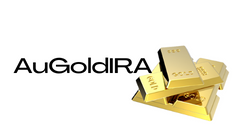
Introduction
Qtum, an open-source blockchain platform, is set to revolutionize the global blockchain industry with its 2024 expansion plan. With the aim of serving the $1.7 trillion market, Qtum is implementing key upgrades to enhance scalability, interoperability, and the co-existence of Bitcoin and Ethereum's best features. This article will explore the roadmap for Qtum's expansion and the features that make it a trailblazer in the competitive digital world of blockchain development.
Qtum's Journey and Unique Approach
Nearly a decade ago, Qtum embarked on a mission to merge the advantages of the two biggest blockchains, Bitcoin and Ethereum. Recognizing the need for efficient and reliable scaling solutions, Qtum rose to prominence by enabling Bitcoin's UTXO model to run alongside the Ethereum Virtual Machine. This groundbreaking approach resulted in high performance, low transaction fees, and universal interoperability. By harnessing the security features of Bitcoin and the functionality of Ethereum smart contracts, Qtum carved a niche for itself in the blockchain landscape.
The Growing Global Blockchain Industry
According to Forbes, the global blockchain industry is projected to be worth $1.7 trillion by 2024, with over $19 billion in spending. Qtum aims to tap into this multi-trillion dollar market by providing developers, builders, businesses, entrepreneurs, and corporates with the tools and opportunities to create global solutions using blockchain technology. With its robust features and forward-thinking approach, Qtum is poised to make a significant impact in the industry.
Qtum's Robust Scalability Features
Qtum has implemented several scalability features to enhance the efficiency and performance of its network. By integrating Segregated Witness (SegWit), Qtum has improved block space usage, resulting in faster transaction speeds and increased throughput. The integration of the Ethereum Virtual Machine (EVM) allows Qtum to process more transactions per block, further enhancing scalability. Additionally, Qtum has optimized its nodes and implemented a modified PoS consensus to prevent bottlenecks and ensure network security.
L2 Technology and Microtransactions
Recognizing the value of microtransactions, Qtum has embraced Layer-2 transactions technology. This enables Qtum to run a Layer-2 network similar to Bitcoin's Lightning Network, facilitating real-time microtransactions with zero gas fees. This feature is particularly valuable for digital marketplaces, gaming, and crypto faucets that rely on frequent but small transactions.
Upcoming Changes in the Qtum 2024 Roadmap
In its 2024 expansion plan, Qtum is set to introduce key upgrades to its platform. One significant change is the implementation of the BRC-20 token standard, which will enhance the performance of smart contracts on Qtum. Additionally, Qtum is developing bridge solutions to enable the transfer of digital tokens between Ethereum and Qtum, opening up new possibilities for developers. The platform is also set to support stablecoins, providing liquidity and new opportunities for Qtum NFTs.
Conclusion
Qtum's 2024 expansion plan positions it as a trailblazer in the global blockchain development market. With its commitment to scalability, interoperability, and the co-existence of Bitcoin and Ethereum's best features, Qtum is well-equipped to meet the needs of developers, builders, businesses, entrepreneurs, and corporates. By leveraging the advantages of the world's leading chains, Qtum aims to revolutionize the industry and unlock the full potential of blockchain technology.
CFTC
irs.gov
finance.yahoo.com
investopedia.com
How To
How to keep physical gold in an IRA
The most obvious way to invest in gold is by buying shares from companies producing gold. However, this method comes with many risks because there's no guarantee that these companies will continue to survive. If they survive, there's still the risk of losing money due to fluctuations in the price of gold.
An alternative option would be to buy physical gold itself. You can either open an account with a bank, online bullion dealer, or buy gold directly from a seller you trust. This option offers the advantages of being able to purchase gold at low prices and easy access (you don’t need to deal directly with stock exchanges). It's easier to track how much gold is in your possession. You'll get a receipt showing exactly what you paid, so you'll know if any taxes were missed. You're also less susceptible to theft than investing with stocks.
However, there can be some downsides. For example, you won't benefit from banks' interest rates or investment funds. You won't have the ability to diversify your holdings; you will be stuck with what you purchased. Finally, the taxman may ask you about where you have put your gold.
BullionVault.com has more information about how to buy gold in an IRA.
—————————————————————————————————————————————————————————————-
Based on [POSTTITLE]
by [POSTAUTHOR]

















